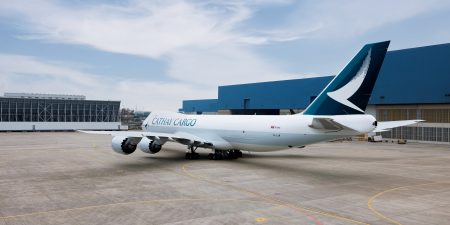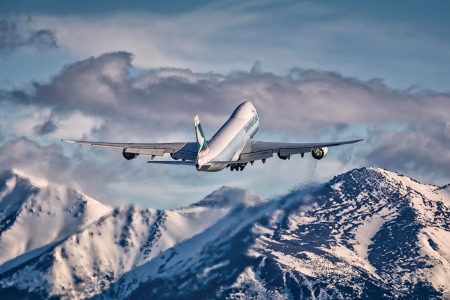It’s 30 degrees. Cathay Pacific cargo manager Kevin Miller describes it as ‘balmy’ or ‘shirt-sleeve weather’. But it’s November and this is Anchorage in Alaska, the US’s northernmost state that sits between Canada and the indeterminate frozen northern polar wastes. They measure temperatures in Fahrenheit here, so it’s two below and Kevin is nonchalantly chiselling ice off the windscreen of the airfield car before a tour of the ramp at Ted Stevens International Airport.
Of course, -2oC is just a taster. Come the depths of winter, it’ll get colder, much snow will fall, winds will howl – and on days with 20 hours of darkness. It can be a hostile place. ‘Yes,’ agrees duty manager Aaron Freeman, ‘but it’s all worth it for the summer – 20 hours of daylight, beautiful scenery and the outdoor life and a nice steady 70 degrees.’
Irrespective of the season and its remote location, Anchorage underpins Cathay Pacific’s transpacific freighter services. Around 70 freighters touch down here each week. It’s a vital pivot for the operation – and for other carriers too. Miller says: ‘There are around 1,700 freighter movements a week here altogether.’
But why? Simply its location, as vice-president cargo, Americas, Fred Ruggiero explains. ‘We could fly our aircraft from North America to Hong Kong non-stop but it’s a long way and with the fuel required we wouldn’t be able to carry the full payload. The stop means we split time and distance so that we can refuel – and load more freight too.’
Refuelling used to be an issue for passenger aircraft too. Miller says: ‘Back in the 1980s, if you lived in Anchorage you could catch a plane to all points in Asia and Europe. You would look along the north terminal and see the tailfins of almost all the world’s airlines.’
Now modern generation aircraft fly miles overhead and the north terminal is something of a ghost town, with passenger flights handled in the South Terminal. In fact, other than the odd TSA pass office, the only signs of life in the former passenger terminal are in the Cathay Cargo office on the second floor.
Here a small team manages what is in simple terms a truck-stop for freighters, a roster of ‘tech stops’, much like the ‘splash and dash’ in the pits during a Grand Prix. But there is much more to it than meets the eye, as the hubbub in Cathay Cargo’s office indicates.



